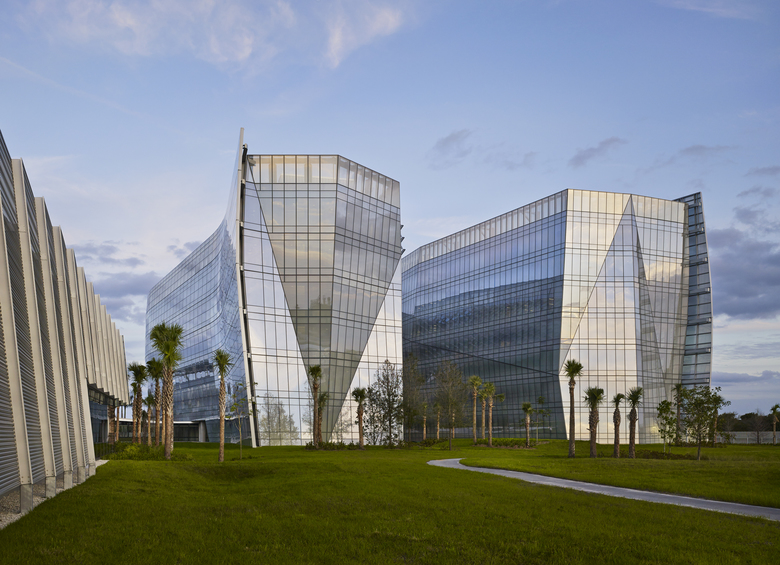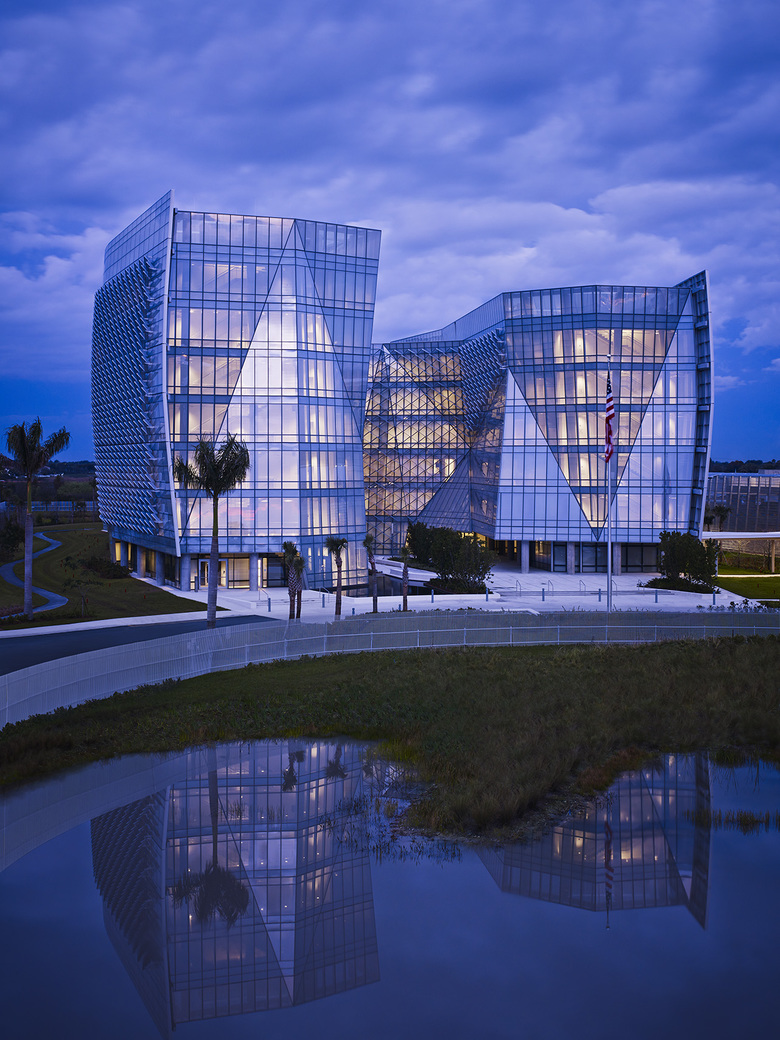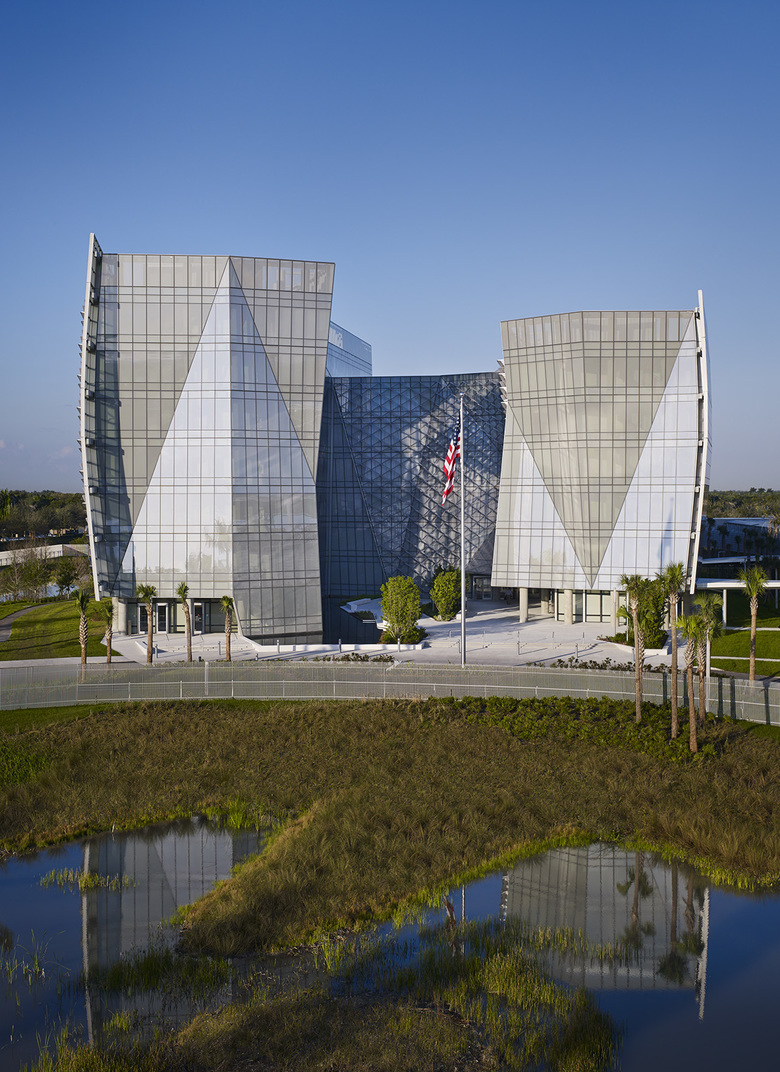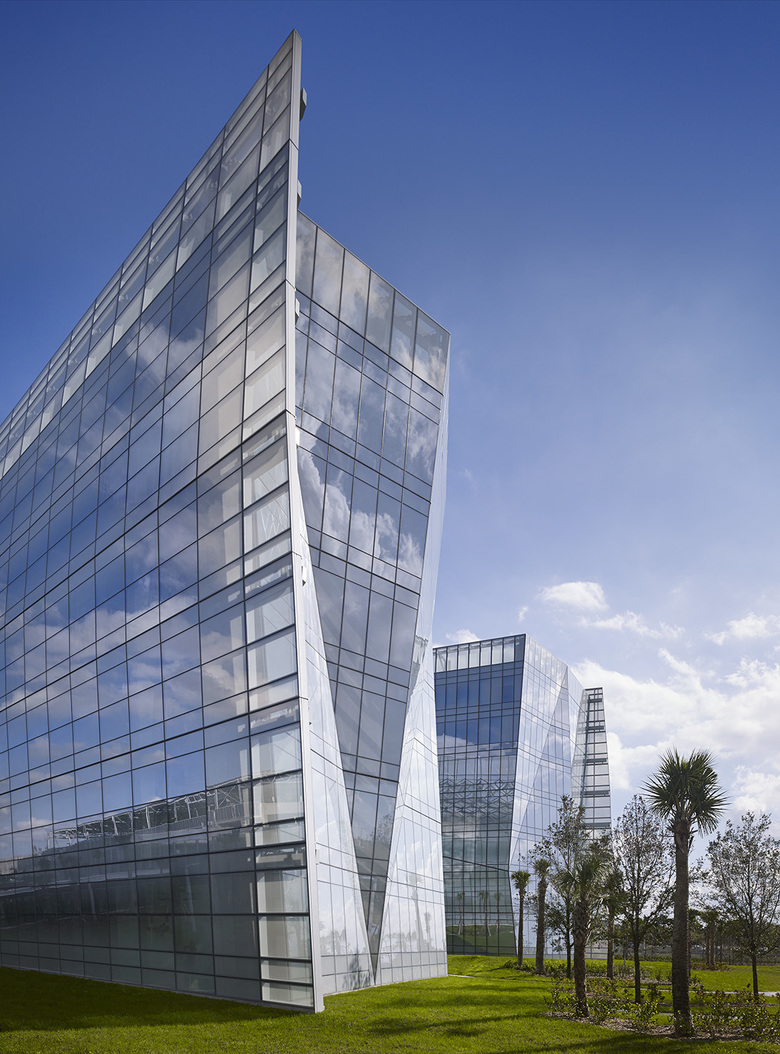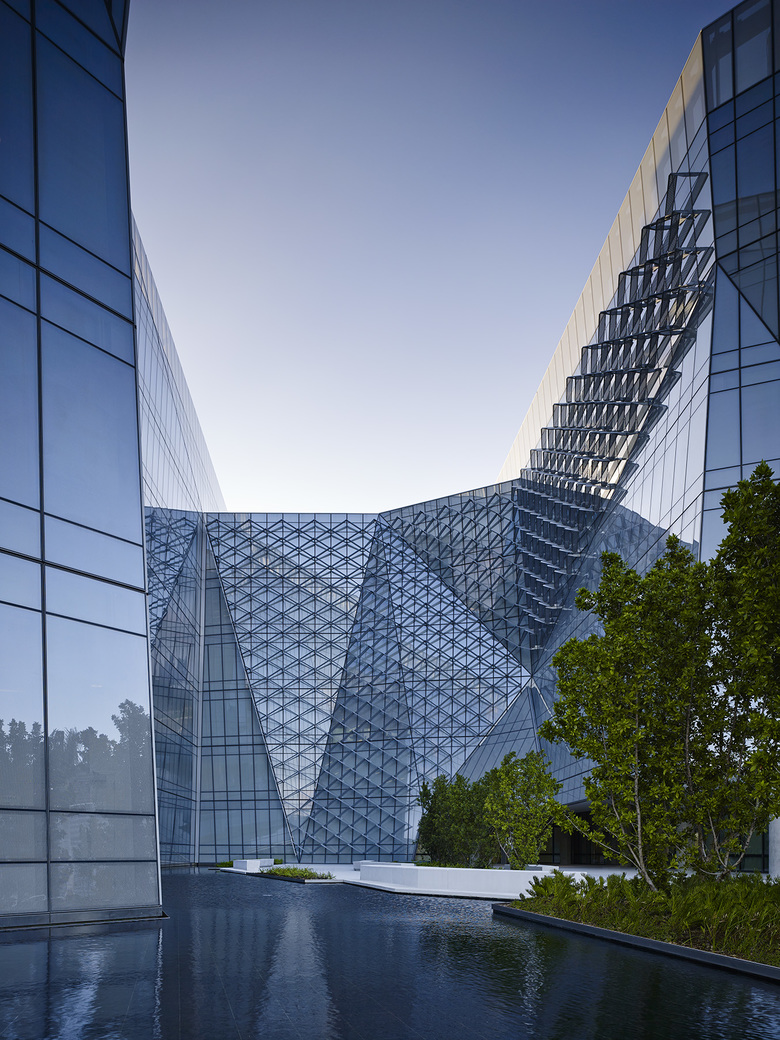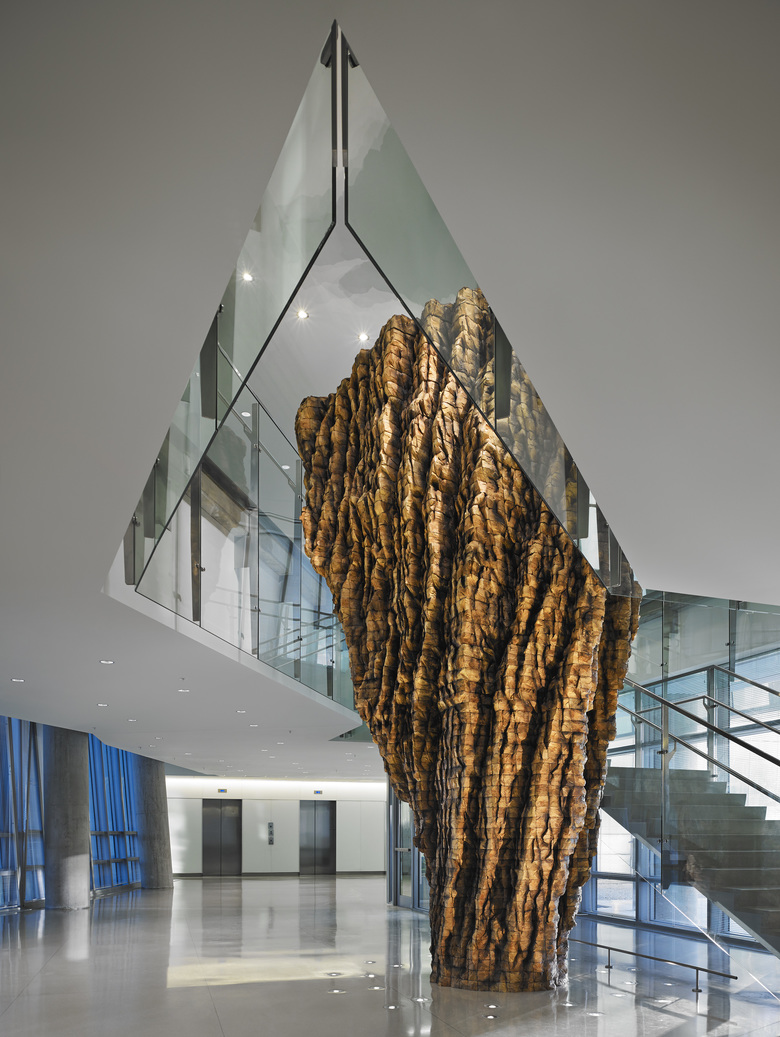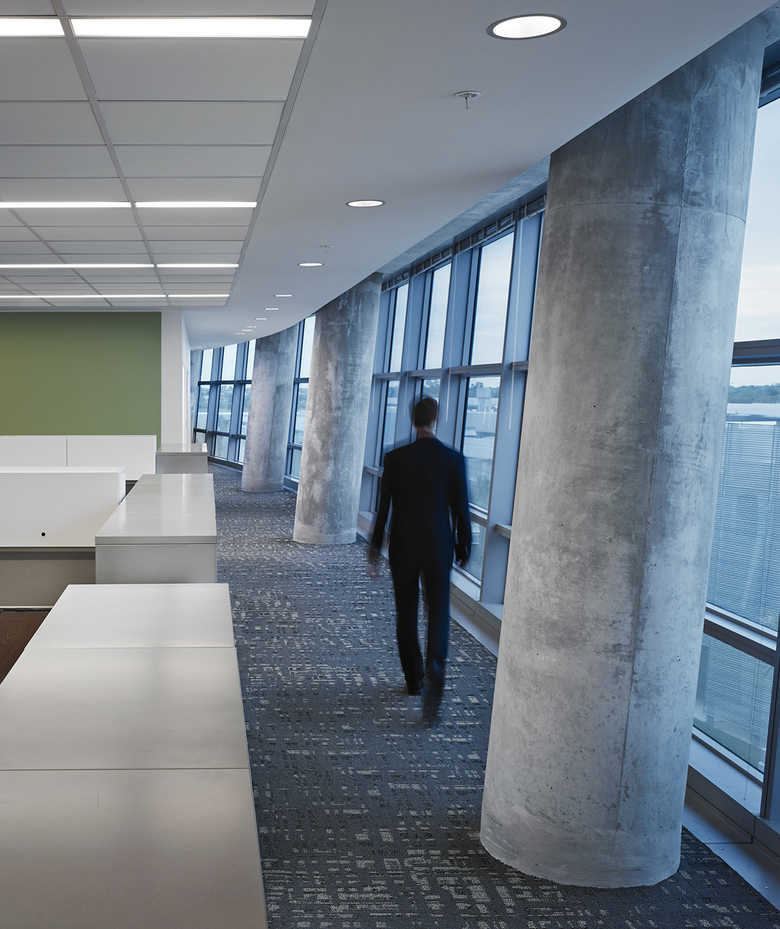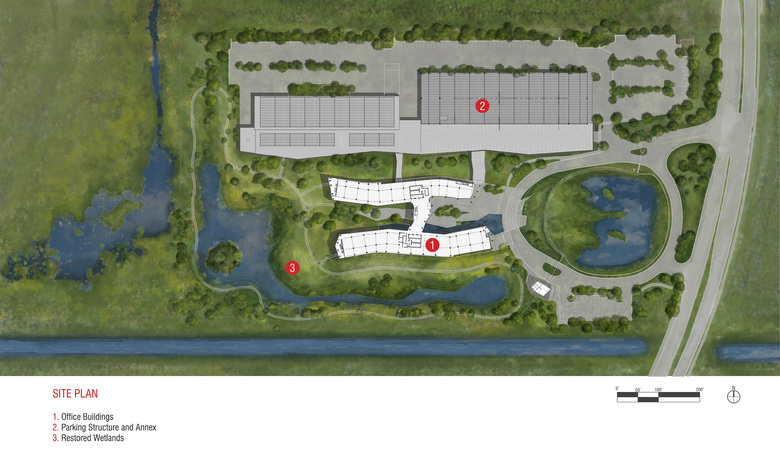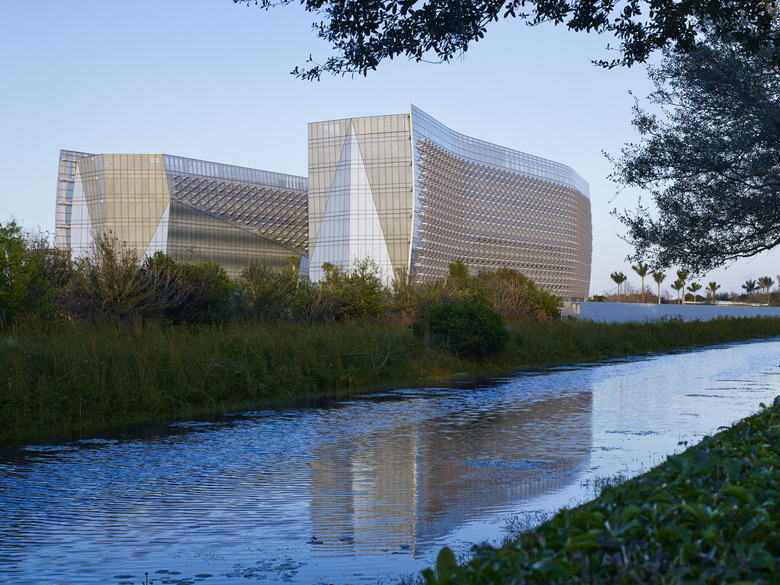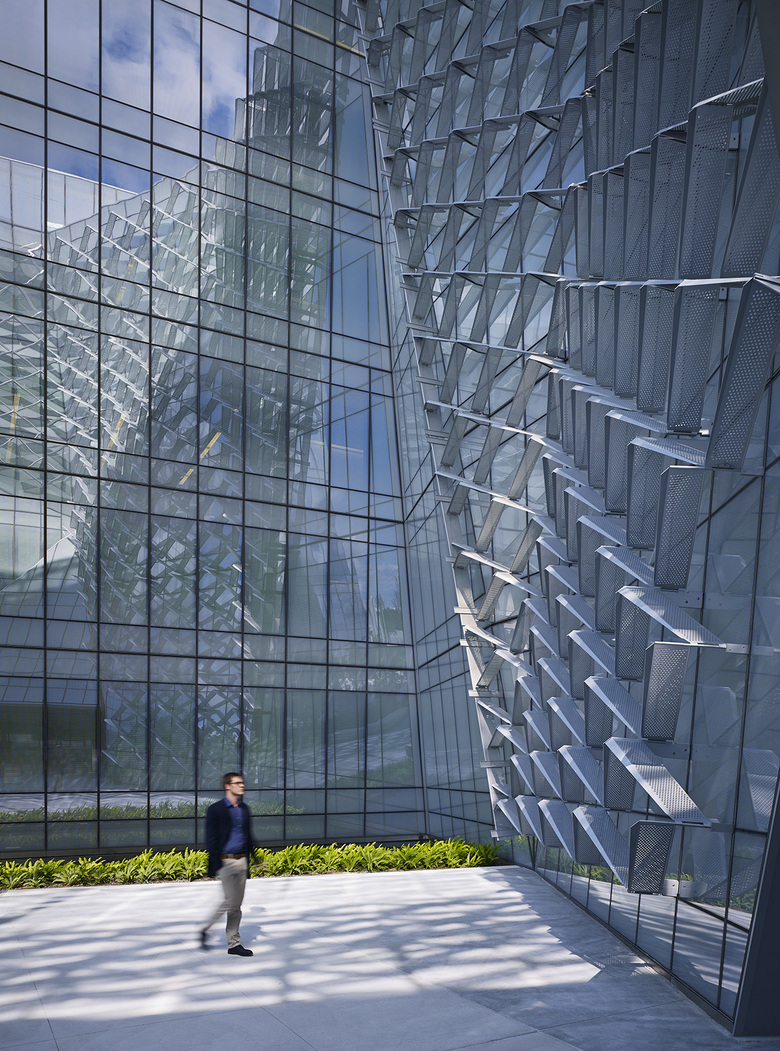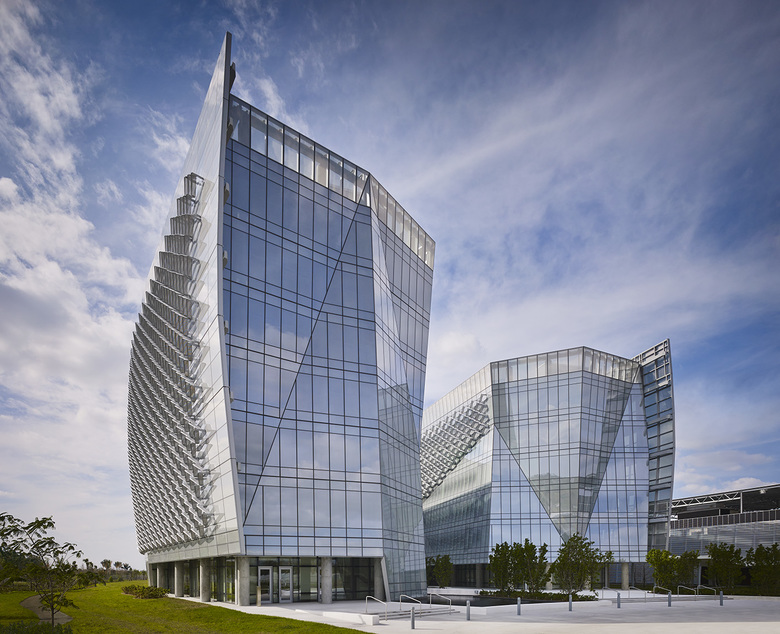Benjamin P. Grogan and Jerry L. Dove Federal Building
Miramar, FL, USA
- Architekten
- Krueck Sexton Partners
- Standort
- Miramar, FL, USA
- Jahr
- 2015 Client/Owner
General Services Administration
BRIDGING DESIGN ARCHITECT
Krueck + Sexton Architects: Ron Krueck, FAIA – Lead Design Principal; Mark Sexton, FAIA – Project Principal; Tom Jacobs, AIA – Design Principal
Project Team: Yugene Cha, Don Semple, AIA, Jennifer Stanovich, Tim Tracey, Laura Fehlberg
Mechanical Engineer: WSP Flack + Kurtz
Structural Engineer/Building Envelope Consultant: Thornton Tomasetti
Electrical Engineer: WSP Flack + Kurtz
Civil Engineer: Miller Legg
Landscape Architect: Curtis + Rogers Design Studio
Lighting Designer: George Sexton Associates
Environment & High Performance Design Consultant:
Atelier Ten
Fire Proof Engineers: WSP Flack + Kurtz
Protective Design: Hinman Consulting Engineers
Fire Protection & Life Safety: Rolf Jensen & Associates
Security Systems: SAKO & Associates
Acoustical, A/V & IT: Dugger & Associates
Vertical Transportation: Jenkins & Huntington
Cost Consultant: Toscano Clements Taylor
Size in Square Feet: 383,000 square feet
Cost: $194M
DESIGN BUILD TEAM
General Contractor: Hensel Phelps, Derek Hoffine
Design Build Architect: Gensler
Project Team: James Wallace, AIA, Principal in Charge; Donald Ghent, AIA, Principal - Technical Director; Peter Stubb, AIA, Principal – Design Director; Chris Banks, AIA, Principal – Design Director Workplace; Joseph Jansen, Sr. Project Manager; Laura DeBonis, AIA, Sr. Architect; Beth Miller, AIA, Sr. Architect; Ronit Shafrir, AIA, Architect; Jennifer Jones, AIA, Architect; Timothy Taylor, AIA, Specifications; Robert Caldwell, Specifications; David Dymond, AIA, Architect; Amy Johnson, Technical Designer; Dan Jones, Project Manager workplace; Heather Dalton, AIA, IIDA, Interior Designer; Elizabeth Mesora, IIDA, Interior Designer; Alison Graham, IIDA, Interior Designer; Paul Rich, Technical Designer; Craig Curtis, Technical Designer; Chris Rzomp, AICP, Urban Planner; Yan Yan Hon, Technical Designer; Atilla Kara, Assoc. AIA, Technical Designer; Amy Mullen, Design Assistant; Hector Montalvo, Technical Designer
Interior Designer: Gensler
Mechanical Engineer: Syska Hennessy Group, Inc.
Structural Engineer: Walter P. Moore
Electrical Engineer: Syska Hennessy Group, Inc.
Civil Engineer: Atkins
Geotechnical Engineer: Professional Service Industries, Inc. (PSI)
Construction Manager: Jacobs
General Contractor: Hensel Phelps
Landscape Architect: Atkins
Lighting Designer: Syska Hennessy Group, Inc.
Blast Analysis: Hinman Consulting Engineers
Curtain Wall Assemblies: Gordon H. Smith Corp.
Krueck + Sexton Architects have completed a 375,000 square foot, highly sustainable Federal Office Building located at 2030 S.W. 145th Avenue in Miramar, FL. Developed under the GSA Design Excellence Program and occupied by the FBI, the campus buildings are oriented and shaped in response to the local climate, natural environment, and agency needs. As a result, the office building maximizes daylight and views while minimizing energy consumption, and provides a superior workplace for federal agents. Restored natural wetlands of the Florida Everglades make up the majority of the 20-acre site, connecting the campus to its native community while visually integrating high-performance perimeter security features.
“Designing the Federal Office Building was a unique opportunity to articulate, in physical form, the values and aspirations of our democracy under GSA’s Design Excellence Program” said Mark Sexton, Founding Principal of Krueck + Sexton Architects. “This building expresses the dignity, enterprise, vigor, and stability of the United States government, while the landscape connects to the native environment by restoring wetlands and vegetation typical of the Everglades.”
The H-shaped office building represents a workplace paradigm that focuses on increased worker effectiveness that is achieved through maximum daylight access and views to the exterior. Two 60-foot wide, undulating multi-story buildings are connected by a link containing meeting spaces that partially enclose 2 central courtyards. The Eastern entry courtyard combines a reflecting pool and more formally composed landscape elements, while the Western courtyard is an extension of the informally designed, restored wetlands for use by employees only.
The all-glass building skin, which allows expansive views over the restored wetlands, consists of insulated window units, which are designed to withstand blast and hurricane impacts. Various glass coatings in combination with exterior perforated metal sunscreens are fine-tuned to maximize interior illumination while controlling excessive perimeter glare and significantly reducing solar gains. Both the office building and its site offer a user and visitor experience unlike any other federal facility.
As part of the GSA Art-in-Architecture program, a 23-foot tall cedar sculpture by German-born, Brooklyn-based Ursula von Rydingsvard will be placed in the entry lobby atrium. Ascending the lobby staircase, one will be very close to the body of the sculpture, stimulating a physical and sensory experience.
Photovoltaic rooftop systems on the campus parking garage and annex provide nearly 20% of the facilities’ energy use, and the office building is set to achieve a LEED Platinum Core & Shell certification. The campus was designed in anticipation of additional, near-term sustainability improvements that will allow achievement of a net-zero energy goal by 2030. The $194 million project was designed in seven months, constructed in 30 months, and delivered on budget under a two-phase bridging-design-build delivery method. The phase two Design-Build contractor was Hensel Phelps with Architect of Record Gensler.
Dazugehörige Projekte
Magazin
-
Winners of the 5th Simon Architecture Prize
vor 4 Tagen
-
2024, The Year in …
vor 5 Tagen
-
Raising the (White) Bar
vor 6 Tagen
-
Architects Building Laws
vor einer Woche
